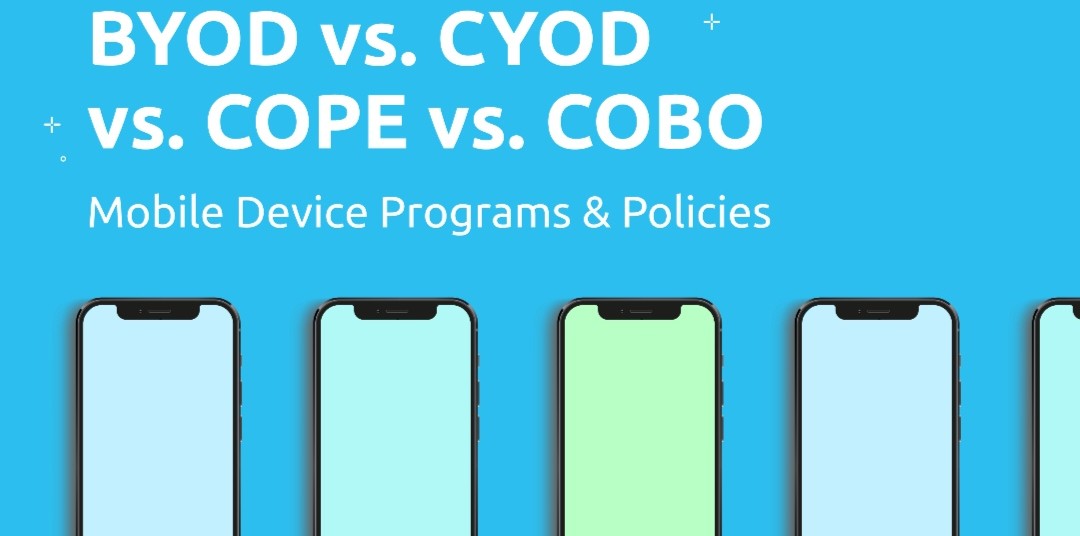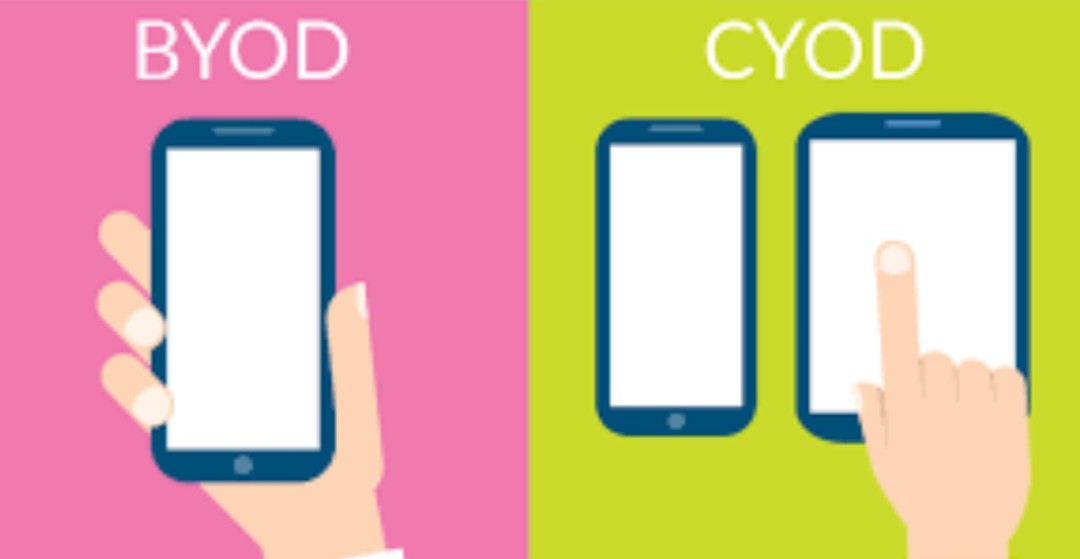CYOD (Choose Your Own Device) and BYOD (Bring Your Own Device) are two different approaches to managing devices in the workplace. With CYOD, employees are given a selection of devices to choose from that are approved by the company. This allows for more control over the types of devices that are used for work purposes, ensuring compatibility and security. On the other hand, BYOD allows employees to use their personal devices for work, which can lead to a greater variety of devices being used but also presents challenges in terms of security and management. Understanding the difference between CYOD and BYOD is important for organizations looking to implement a device management strategy that meets their specific needs and preferences.
One key difference between CYOD and BYOD is the level of control that organizations have over the devices being used for work purposes. With CYOD, companies can maintain a level of control by providing employees with a selection of approved devices to choose from. This ensures that all devices meet certain security and compatibility standards, reducing the risk of data breaches or compatibility issues. On the other hand, with BYOD, employees are free to use their personal devices for work, which can lead to a wider variety of devices being used. While this can increase flexibility and employee satisfaction, it also presents challenges in terms of security and management, as organizations have less control over the devices being used.
Another key difference between CYOD and BYOD is the impact on IT resources and support. With CYOD, organizations can provide support for a limited number of approved devices, making it easier for IT teams to manage and troubleshoot any issues that arise. This can lead to greater efficiency and reduced support costs. On the other hand, with BYOD, IT teams may be required to support a wide range of devices, each with its own unique set of challenges. This can increase the workload for IT teams and lead to higher support costs. Understanding the difference in terms of IT resources and support is important for organizations looking to implement a device management strategy that is both effective and cost-efficient.
In conclusion, understanding the difference between CYOD and BYOD is essential for organizations looking to implement a device management strategy that meets their specific needs and preferences. While CYOD offers greater control and security, BYOD provides flexibility and employee satisfaction. By considering factors such as control, security, IT resources, and support, organizations can choose the approach that best aligns with their goals and priorities. Ultimately, the decision between CYOD and BYOD will depend on the unique needs and circumstances of each organization, but having a clear understanding of the differences between the two approaches is key to making an informed decision.

Understanding CYOD
Choose Your Own Device (CYOD) is a concept that allows employees to select their preferred device for work purposes. This approach differs from the traditional Bring Your Own Device (BYOD) model, where employees use their personal devices for work tasks. With CYOD, organizations provide a selection of approved devices for employees to choose from, ensuring compatibility, security, and support. This model offers a balance between employee autonomy and organizational control by allowing employees to select a device that suits their preferences and work style while still adhering to company policies and security measures.
Understanding CYOD is essential for organizations looking to implement a device strategy that meets the needs of both employees and the business. By offering a selection of approved devices, organizations can ensure that employees have access to the tools they need to be productive while also maintaining security and compliance standards. This approach can also help reduce the burden on IT departments, as they only need to support a limited number of devices rather than a wide range of personal devices with varying operating systems and security levels. Additionally, CYOD can help organizations streamline device procurement and management processes, as they can negotiate bulk discounts with vendors and standardize device configurations and software installations.
Overall, CYOD represents a middle ground between the flexibility of BYOD and the control of a fully managed device program. By allowing employees to choose from a selection of approved devices, organizations can strike a balance between employee satisfaction and organizational security and compliance requirements. As the digital workplace continues to evolve, understanding CYOD and its benefits can help organizations stay competitive and agile in a rapidly changing business environment.
Crafting a CYOD Policy
Crafting a Choose Your Own Device (CYOD) policy is essential for businesses looking to provide flexibility and choice to their employees while maintaining security and efficiency. A well-thought-out CYOD policy outlines guidelines and parameters for employees to select their preferred devices from a pre-approved list of options. This allows employees to work on devices they are comfortable with and that meet their specific needs, ultimately enhancing productivity and job satisfaction.
Additionally, a CYOD policy can help organizations save costs by streamlining device procurement and maintenance processes. By setting clear expectations and requirements for device usage, businesses can mitigate potential security risks and ensure compliance with company policies and industry regulations. It is important for organizations to consider factors such as data protection, device compatibility, and technical support when developing a CYOD policy.
Collaborating with IT professionals and soliciting feedback from employees can help create a policy that strikes a balance between employee autonomy and organizational security. Ultimately, a well-crafted CYOD policy can empower employees, improve efficiency, and enhance overall business operations.

Device Types
Device types refer to the various categories of electronic gadgets and tools that individuals use in their daily lives. These devices can range from smartphones and laptops to tablets and gaming consoles. Each device type serves a specific purpose and provides unique functionalities to its users. For example, smartphones are used for communication, browsing the internet, and accessing various applications, while laptops are primarily utilized for work, school, and entertainment purposes.
Tablets offer a more portable and versatile option for users who require a larger screen size than a smartphone but do not need the full functionality of a laptop. Gaming consoles cater to individuals who enjoy playing video games and offer a more immersive gaming experience compared to other devices. Additionally, wearable devices such as smartwatches and fitness trackers have gained popularity in recent years, providing users with real-time data on their health and fitness levels.
Overall, the variety of device types available in the market allows individuals to choose the most suitable option based on their needs and preferences. Whether it’s for communication, entertainment, productivity, or health monitoring, there is a device type to cater to every individual’s lifestyle and requirements. As technology continues to evolve, new device types are constantly being introduced, offering users even more options to enhance their daily activities and experiences.
Management & Support
Management and support are essential components of any successful organization. Effective management ensures that resources are allocated efficiently, goals are set and achieved, and employees are motivated and engaged. Support, on the other hand, involves providing the necessary tools, training, and guidance to help employees perform their best. Without proper management and support, an organization can struggle to meet its objectives and maintain a positive work environment.
Managers must be able to effectively lead their teams, communicate expectations clearly, and provide feedback and recognition when needed. Supportive measures such as mentorship programs, training opportunities, and employee assistance programs can help employees feel valued and supported in their roles. By prioritizing management and support within an organization, leaders can create a culture of accountability, collaboration, and success. Overall, effective management and support are crucial for fostering a productive and harmonious work environment.

Integration & Applications
Integration and applications play a crucial role in our society today. It involves bringing together different elements to create a cohesive and functional system. This can be seen in various fields such as technology, business, and healthcare. In technology, integration allows different software systems to work together seamlessly, improving efficiency and productivity.
For example, companies can integrate their customer relationship management system with their email marketing platform to streamline communication with clients. In the business world, integration is essential for optimizing operations and maximizing profits. Companies can integrate their supply chain management systems with their inventory tracking systems to ensure timely delivery of products and reduce waste. In healthcare, integration of electronic health records allows healthcare providers to access patient information quickly and accurately, leading to better patient care.
Applications of integration can also be seen in everyday life. For instance, social media platforms use integration to connect people from all over the world, allowing them to share information and communicate in real-time. E-commerce websites use integration to provide a seamless shopping experience for customers, from browsing products to making payments. In the education sector, integration of technology in classrooms has revolutionized the way students learn, with digital tools and resources enhancing the learning experience.
Overall, integration and applications are essential for progress and innovation in our rapidly evolving world. By bringing together different elements and systems, we can create more efficient processes, improve communication, and drive growth in various industries. As technology continues to advance, the possibilities for integration and applications are limitless, offering endless opportunities for improvement and development. Embracing integration and its applications is key to staying competitive and relevant in today’s fast-paced world.
Challenges with CYOD Policies
Choose Your Own Device (CYOD) policies can present a variety of challenges for organizations to navigate. One of the main challenges is ensuring compatibility and security across a diverse range of devices. With employees bringing in their own devices, IT departments may struggle to effectively manage and secure each device, leading to potential vulnerabilities and data breaches. Additionally, CYOD policies can create complexities in terms of supporting and troubleshooting various devices, as different operating systems and software versions may require specialized knowledge and resources.
Another challenge with CYOD policies is maintaining control and oversight of company data and applications on personal devices. Without clear guidelines and restrictions in place, employees may inadvertently expose sensitive information or compromise company resources. Furthermore, organizations may face difficulties in enforcing compliance with company policies and ensuring that employees adhere to security protocols when using their own devices for work purposes.
Overall, while CYOD policies can offer flexibility and convenience for employees, they also present significant challenges for organizations in terms of managing security, compatibility, and data protection. Finding a balance between empowering employees to use their preferred devices and maintaining the security and integrity of company resources remains a complex and ongoing challenge for organizations implementing CYOD policies.

COPE and COBO Explained
COPE and COBO are terms that are often used in discussions about ethical behavior within organizations. COPE stands for Conflict of Personal Ethics, while COBO stands for Conflict of Business Objectives. These terms refer to situations where individuals within an organization may find themselves facing a dilemma between their personal values and beliefs and the goals and objectives of the organization they work for.
COPE can arise when an employee is asked to engage in behavior that goes against their personal ethics, such as lying or cheating. On the other hand, COBO can occur when an employee is faced with a decision that may benefit the organization financially, but goes against their own moral compass. Both COPE and COBO can create tension and stress for employees, as they are forced to navigate the complexities of balancing their personal values with the demands of their job.
It is important for organizations to have clear guidelines and policies in place to help employees navigate these ethical dilemmas and make decisions that are in line with the values of the organization. By fostering a culture of transparency, open communication, and ethical decision-making, organizations can help employees navigate COPE and COBO situations in a way that upholds integrity and trust within the workplace.
Parallels RAS for Efficient App Delivery
Parallels RAS is a cutting-edge technology that enables businesses to efficiently deliver applications to their users. By centralizing and virtualizing applications in the cloud, Parallels RAS streamlines the delivery process, making it faster and more reliable. This means that employees can access the applications they need from any device, anywhere in the world, without experiencing lag or downtime. This level of efficiency not only improves productivity within the organization but also enhances the overall user experience.
One of the key benefits of using Parallels RAS for application delivery is its cost-effectiveness. By centralizing applications in the cloud, businesses can reduce the need for expensive hardware and infrastructure, as well as the costs associated with maintaining and updating multiple application installations. This not only saves money in the long run but also allows businesses to scale their operations more easily as they grow.
Another advantage of using Parallels RAS is its security features. By virtualizing applications in the cloud, businesses can ensure that sensitive data remains protected at all times. Parallels RAS uses advanced encryption and access control mechanisms to safeguard data, preventing unauthorized users from gaining access to confidential information. This level of security is crucial in today’s digital landscape, where data breaches and cyber-attacks are becoming increasingly common.
In conclusion, Parallels RAS is a powerful tool for businesses looking to streamline their application delivery processes. By centralizing applications in the cloud, businesses can improve efficiency, reduce costs, and enhance security. With its user-friendly interface and advanced features, Parallels RAS is the ideal solution for businesses looking to stay ahead of the curve in today’s fast-paced digital world.
